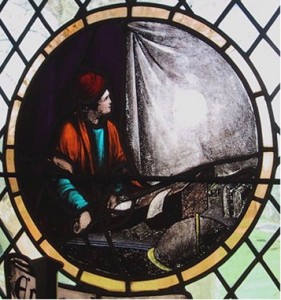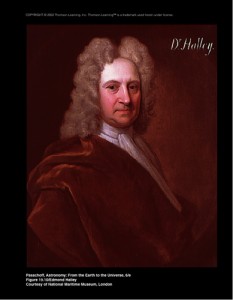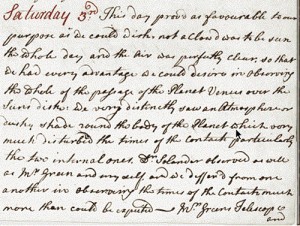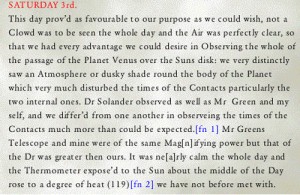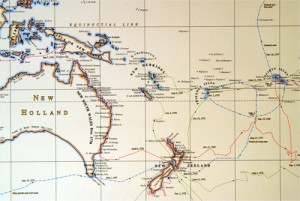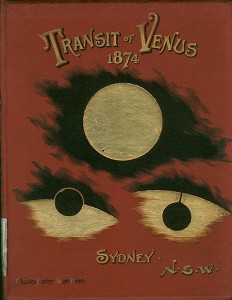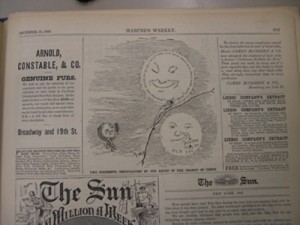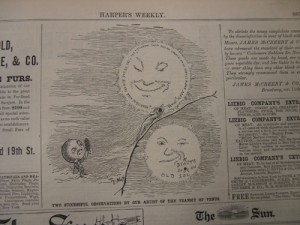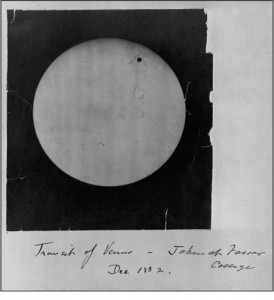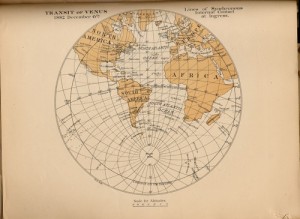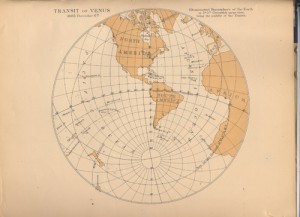Click on any thumbnail for a larger image.
1639
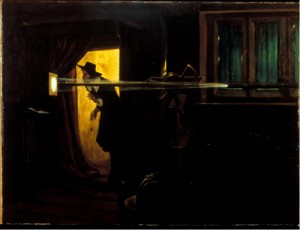
Eyre Crowe’s 1882 painting of Horrocks observing the 1639 transit of Venus.
(Liverpool Art Museums/The Walker)
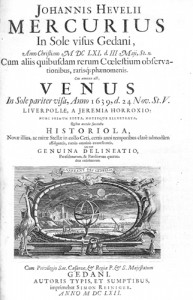
Hevelius’s 1662 publication on the 1639 transit of Venus and on transits of Mercury
(Courtesy of Owen Gingerich)

Frontispiece of Hevelius’s 1662 publication on the 1639 transit of Venus and on transits of Mercury.
(Courtesy of Owen Gingerich)
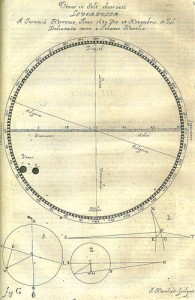
Frontispiece of Hevelius’s 1662 publication on the 1639 transit of Venus and on transits of Mercury.
(Courtesy of Owen Gingerich)
1761
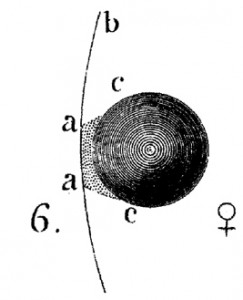
The black drop effect drawn by Thobern Bergman and published in
the Philosophical Transactions of the Royal Society.
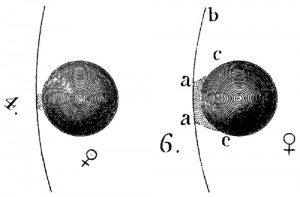
Thobern Bergman’s (1761-1762) rendition of the Black Drop effect during the 1761 transit of Venus.
Reprinted with permission from the Royal Society.
1769
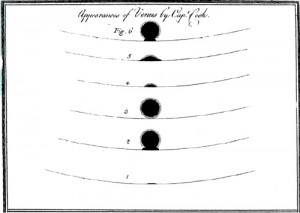
The black drop effect and Venus’s atmosphere sketched by Captain Cook and published in the Philosophical Transactions of the Royal Society.
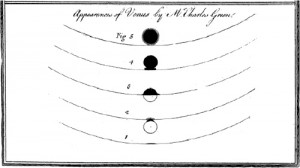
Cook, J., and C. Green. 1771. Observations made, by appointment of the Royal Society,at King George’s Island in the South Sea; by Mr. Charles
Green,formerly assistant at the Royal Observatory at Greenwich,and Lieut. James Cook, of His Majesty’s Ship the Endeavour. Phil Trans. 61, 397-421.
1874
- A poem:
From PUNCH, or THE LONDON CHARIVARI
December 19, 1874
THE TRANSIT OF VENUS
The Transit of Venus is over:
A spot on the Sun for four hours,
The radiant aërial-rover
Now sparkles the chief of star-flowers,
Home troop the astronomers various,
And bring their celestial log,
Some rendered by sunshine hilarious,
Some damped by inopportune fog.
They went forth in peaceful battalions,
The secrets of Science to clutch,
Americans, Germans, Italians,
With Frenchmen and English and Dutch:
Where the hardness of ice defies granite’s
Where lizards the noon-day warmth ahun,
They watched the most brilliant of planets
turn sable in crossing the Sun.
“Alma Venus,” exclaimeth LUCRETIUS;
Fair Goddess, the player of many tricks,
Of doings fantastic, facetious,
The quite inexhaustible genetrix!
Now binding all nations together
In a scheme tele-plus-spectroscopie,
Star-goddess, you bring us fair weather,
And we hail you as most philantropic.
When, braving sub-tropie malaria,
And noses and fingers that freeze,
From Kerguelen to dismal Siberia
Astronomers sail o’er the seas,
Fair Venus, our beautiful neighbour,
Throws down her distinguishing light,
‘Twixt the armies for Science who labour,
And the armies for conquest who fight.
Punch with patience waits tidings of Science,
But waits, with a thirty impatience,
For the time when all warlike defiance
Will cease among civilised nations.
From quarreling canst thou not screen us,
O brightest and clearest of stars,
And let the last Transit of Venus
Be crowned by the Exit of Mars?
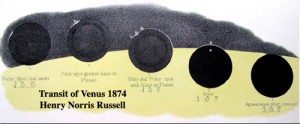
The observations of the 1874 transit of Venus from Australia by Henry Chamberlain Russell, from a book that also included a 1761 image of the black-drop effect by Thobern Bergman from the Philosophical Transactions of the Royal Society. (The wrong Russell’s name was added much later to this image).
1882
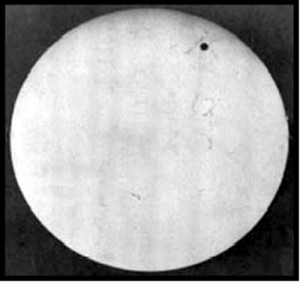
The 1882 transit of Venus, photographed at Vassar College by Maria Mitchell and her students.
(Special Collections, Vassar College Library)
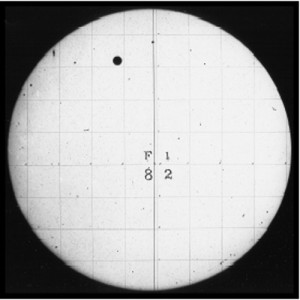
One of the handful of remaining photographic plates of the US Naval Observatory’s expeditions to observe the 1882 transit of Venus.

